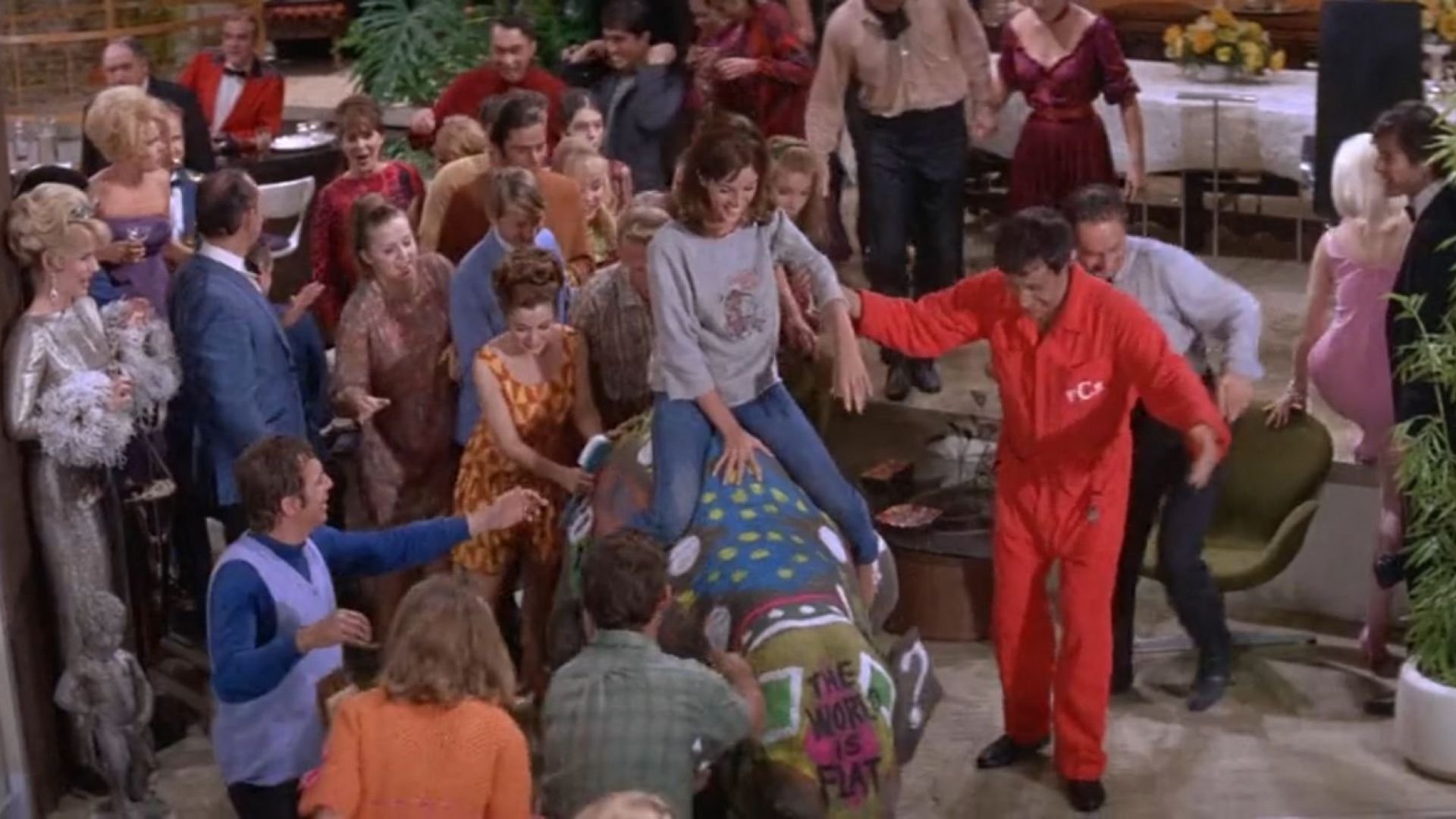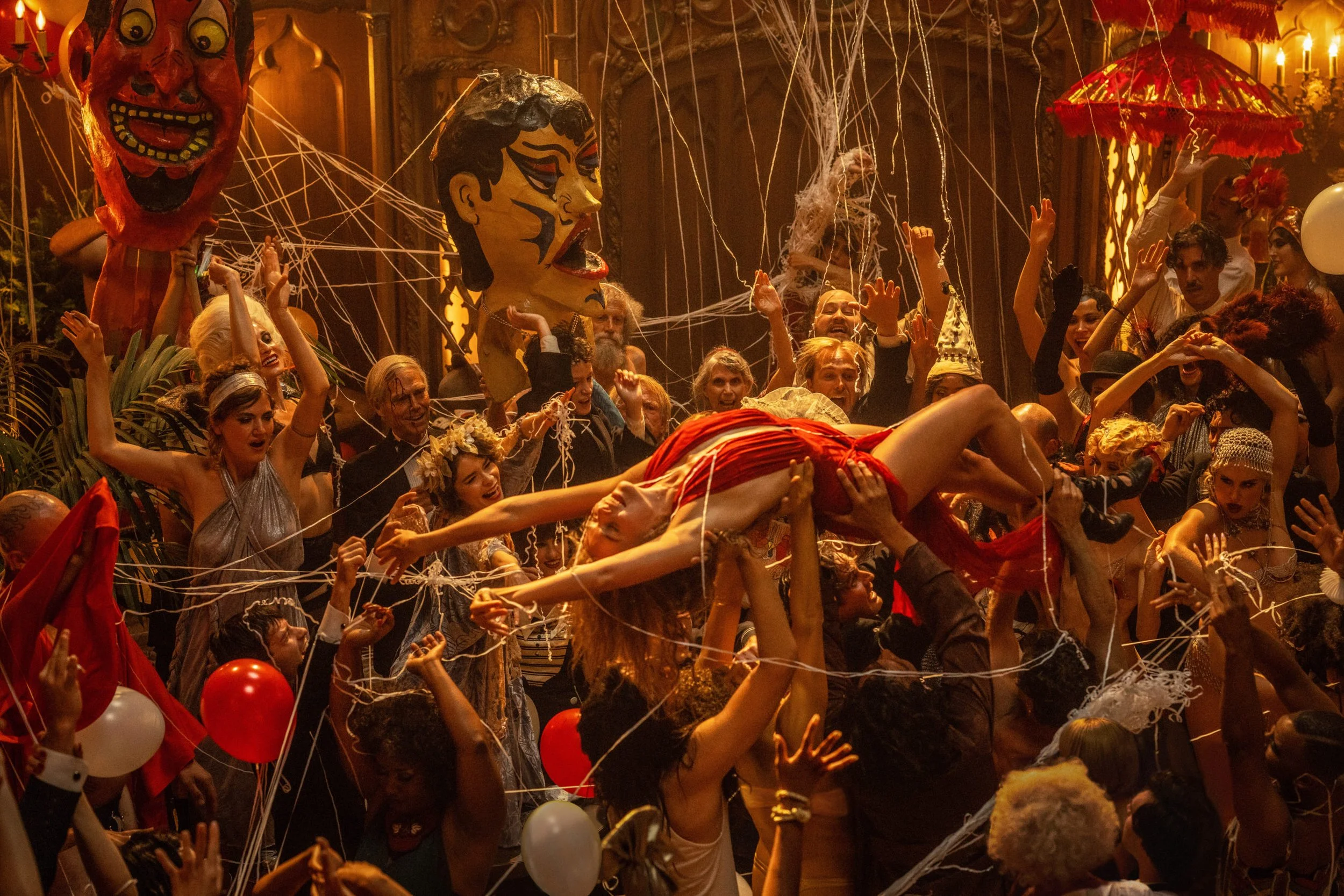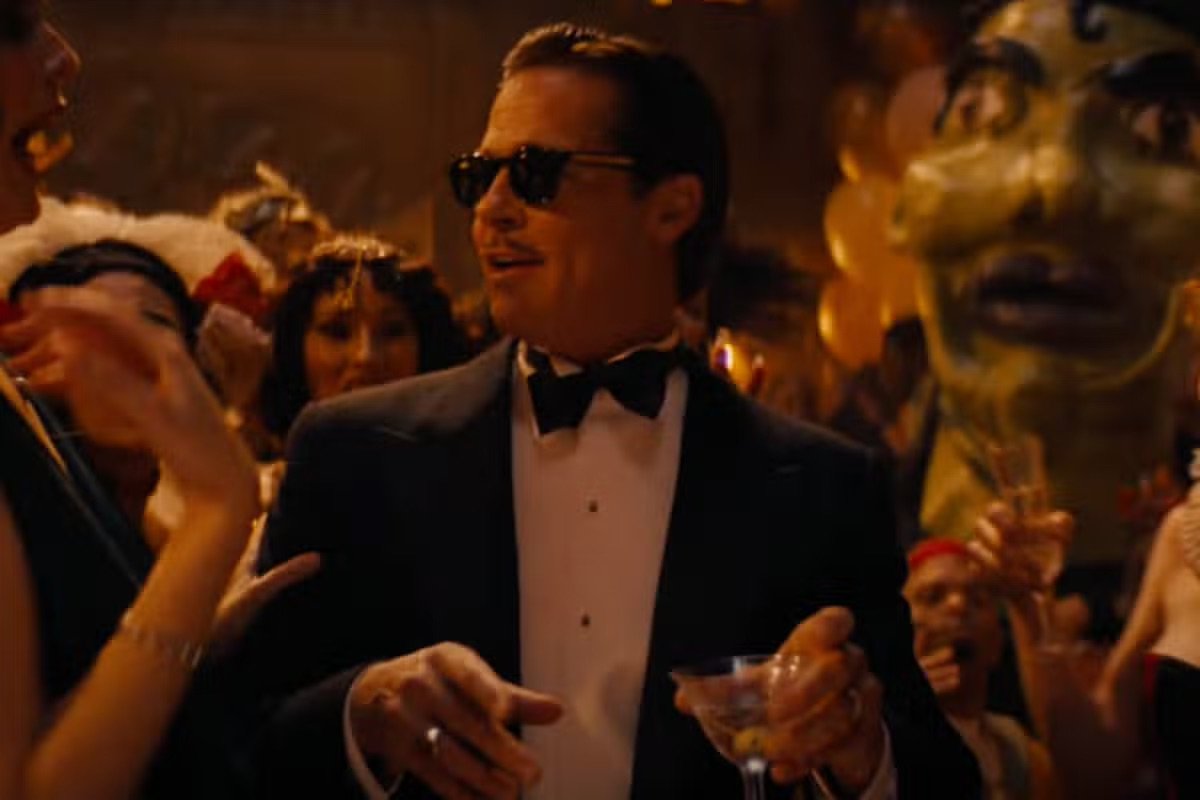
PARTIES

Sellers and Edwards had proven their successful collaboration with The Pink Panther (1963) series. And a third field-leading collaborator was one of the finest composers of all time, Henry Mancini. The music plays as much a role as the performances in every film. Try not to groove out with the main theme. Go ahead.
…
And we’re back. The elephant in the room is not the actual elephant in the room later in the film – it is that the film ages poorly, with Sellers having played the role in brown face, impersonating a bumbling Indian actor. If this film is unseeable to anyone for that reason – fair enough. This film would have worked just as well had he just been a hilariously bad actor, of his own race. Sellers was a chameleon, and impersonated a range of people, personalities and races in his (antiquated) time.
Writers and critics have wrestled with this film, like Jesse Hessenger wrote in PopMatters back in 2014. He wrote, “The brownface, unfortunate as it looks now, doesn’t entirely play as racist caricature because chameleonic comedy was the actor’s stock in trade. The Indian character is just another Sellers mask, regardless of the extremely poor taste.” Now, is it important that it is racist, if not entirely racist? Of course. Can we still access any performances in which actors of one race portray actors of another? Do we not still hear imitations of race (and other factors of identity) in stand-up comedy? These are complicated questions, and hopefully we can access and appreciate problem-free elements of comedy, both old and new.
Both achieve wild spectacles for their time depicted (both including elephants), with The Party culminating in a delightful melee, and Babylon descending into the dregs and deflation of the morning after.
My first time seeing the film, disbelief attended the half hour party scene that launches the film. Coke and heroin in a side room, in the 1920s? No way, right? But indeed, t’was so. There was a great piece in Variety last year that delved into the historical accuracy of this kind of partying at that time in Hollywood. This was a moment before ethics codes, the Motion Picture Association of America, and the Depression, not to mention before many drugs like those were criminalized.
In The Party, most of it has nothing to do with race at all. It’s about washing off your shoe in an indoor pond. Broadcasting dumb chatter over a house intercom. Projecting a roast chicken onto the tiara of a woman across from you. You know – standard party fare. It’s essentially a stringout of 5-7 minute sight gags, one after the other. And it’s at an easy pace; there is no fast action at all, just Sellers working his way through the crowd and the night until there’s nothing but comic devastation in his wake.
The film also bumbles along, at a slow pace, making us as viewers feel like attendees, versus the more explicit staging of many parties in film. The party scenes in the raucous Marx Brothers classic A Night at the Opera (1935) play more like a stage play, with we, the audience, viewing them, the revelers, from a single, direct perspective. The party (parties) in Boogie Nights (1997) deliver the feeling of roaming around a house party, with each room offering different vibes and pleasures. In The Great Gatsby (2013), the camera swooshes and dives drunkenly, simulating drunkenness and debauchery. All of these have numbers, setting, revelry and peaks (much different across them, but all of them moving the story along).
There are many practical reasons why party scenes in film are such a delight for directors, performers and crews. Many of them take place in a residence, making soundstages perfectly suitable. This means all conditions can be controlled, and more can be done with lighting and camera movement.
They also give permission to depict the kinds of uninhibited human behavior we do not see in any other settings of large groups of people, which, let’s face it, is undeniably entertaining. In The Party, things are pretty tame, save a little soap. In Babylon, director Damien Chezelle goes full bore into excess in all forms, be it sound, substance, excrement, sex and, for the unfortunate, more. And, while The Party’s party builds over its run time, climaxing at the expected end, Chezelle places Babylon’s party right at the beginning, all half an hour of it.
These two films deliver on all of the above, both set and produced in very different times than today. The Party (1968) takes place in the swinging 60s of Hollywood. Babylon (2022) takes place in the same location, but four decades prior, when Bel Air was mere farmland and hills. The former was produced well before wokeness, while the second embraces every aspect of old Hollywood’s diversity and reality. And while The Party is carried by the tireless performance of comedic legend Peter Sellers, the second relies on three primary characters. Both enjoy a bevy of supporting cast members leaning into chewy performances, which is essential. (Numbers.)
One of the most astonishing things about The Party is that it was mostly improvised. Veteran director Blake Edwards created a script outline of about 50 pages, but most of what Sellers said and a lot of what he did was improvised. And, it was one of the first films to use live playback, which is when a separate camera records the scene, and the team can rewind and watch live, saving the cost of additional filming and reshoots. This is especially handy when filming comedy, which is never a one-take trip.
Here is the main way in which our films diverge: historical accuracy. Where The Party uses stereotypes (both racial and those of the film industry), Babylon brings to life many real or near-real stories of the people working and partying in the industry back then:
Brad Pitt’s character Jack Conrad was based on real life silent film icon John Gilbert, and whose glory faded with the advent of talkies
Li Jun Li’s character Lady Fay Zhu in is based on Chinese American actress Anna May Wong, who actually did leave for Europe, for better roles
Margot Robbie’s character Nelly Ray was based on 20s it girl Clara Bow, who came from and met unfortunate circumstances
By this comparison, it’s easy to argue that The Party is all spectacle and no story, with Babylon delivering both. The first is a lighthearted comedy, the second a comedic historical drama capturing a pivotal moment in time (the advent of sound in Hollywood.)
But that’s also why they make great companions: one is a fizzy glass of champagne, the other a gut-punch of hard drugs. In one the party is the story; in the other, the party is mere preamble. The peak from which the story descends. Both feature great scores, great performances and set pieces that are watchable and rewatchable again.
I’ve thrown more parties that haven’t achieved that above than have – but that won’t stop me from trying. Maybe all I need is an elephant.
ONE HELLUVA PARTY
One of the best parties I ever hosted was with my sister, a Christmas party in a 300 year old carriage house on the Hudson River, thirty minutes north of New York, where we lived. It had a two story open space with these huge barn doors that opened, just like in the ending of White Christmas (1954). We had a live band, a full bar and a champagne toast. I couldn’t remember one topic of conversation I spun through that night – but I remember it had all the right elements of a great party. For consideration:
Numbers. I’ve thrown parties where not enough people come to create a crowd, and it ends early for everyone’s sake. For this party, we had 40-50 people; a rousing number.
Setting. This house was special, and charmed everyone who visited. The setting has to be interesting in some way, even if it is an average apartment done up in a theme.
Revelry. It’s the energy that makes a party great, emerging from people enjoying each other’s company on a bigger scale than 3-4 folks.
Peak. We’ve all been to parties where we keep wondering if something is going to happen… we know it’s “cocktails and light fare,” so there’s no dinner service… with zero structure, most parties suffer. A peak can be a toast, a performance, a reveal of news, or a climax of letting loose – something to anchor the event.









